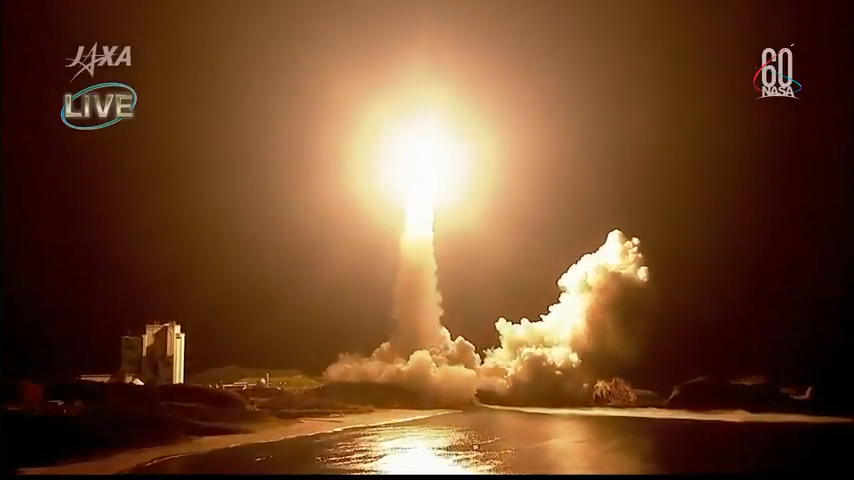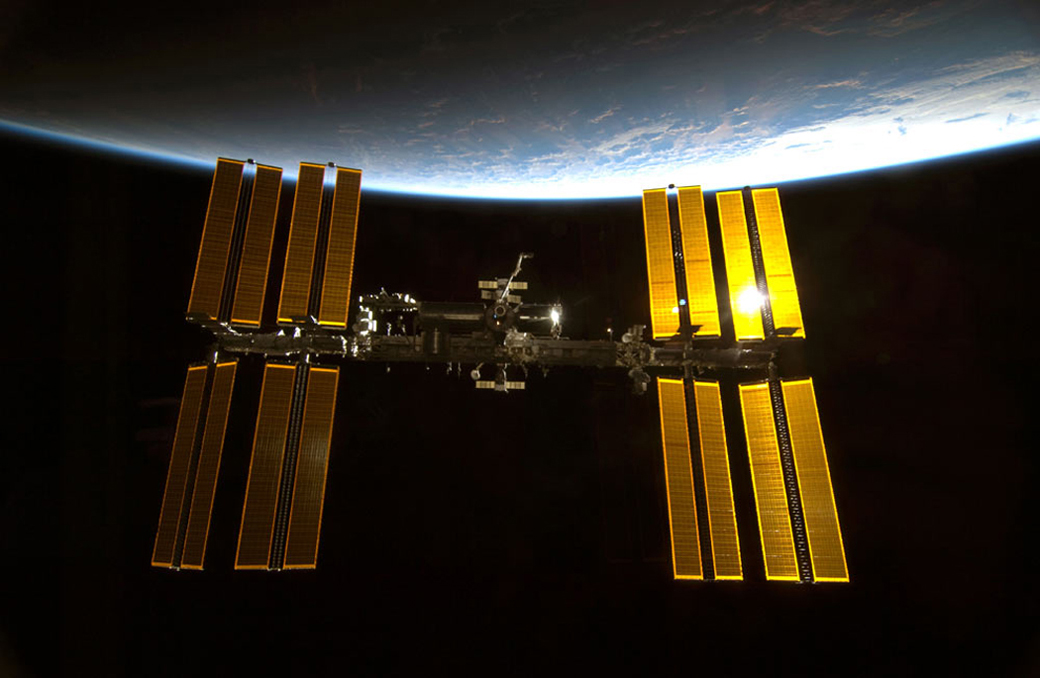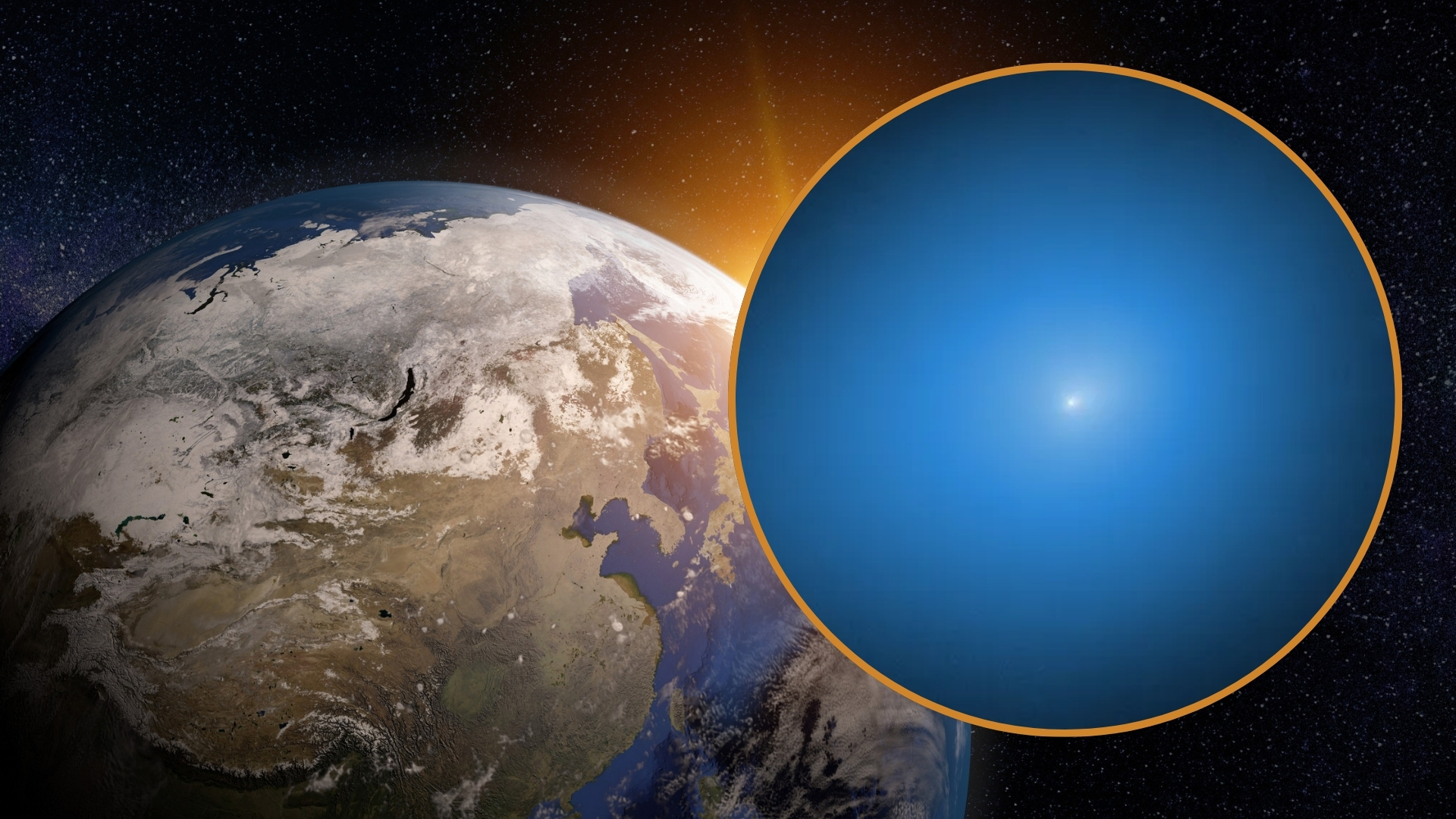Japanese Cargo Ship Launches Toward Space Station
A robotic Japanese resupply ship has launched toward the International Space Station (ISS), kicking off a five-day orbital chase.
The HTV-7 freighter — which is loaded with more than 5 tons (4.5 metric tons) of science gear, food, fuel and other supplies — lifted off atop an H-II rocket from Japan's Tanegashima Space Center today (Sept. 22) at 1:52 p.m. EDT (1752 GMT; 2:52 a.m. on Sept. 23 Japan standard time).
If all goes according to plan, HTV-7 will arrive at the orbiting lab early Thursday morning (Sept. 27), NASA officials said.
HTV-7 was originally scheduled to take flight Sept. 10, but that liftoff was canceled because Typhoon Mangkhut was forecast to bring terrible weather to Guam, where a key Japanese Aerospace Exploration Agency (JAXA) tracking station is located. Bad weather around Tanegashima and an issue with the freighter's rocket conspired to delay the liftoff until today.
"HTV" stands for "H-II Transfer Vehicle." The freighter is also known as Kounotori, which means "white stork" in Japanese.
As its name suggests, HTV-7 is the seventh Kounotori mission. The first of these cargo craft launched in September 2009, and the most recent previous mission, HTV-6, lifted off in December 2016.
The HTV is one of four robotic cargo spacecraft that service the ISS. The other three are Russia's Progress freighter, SpaceX's Dragon capsule and Northrop Grumman's Cygnus vehicle. (Europe's Automated Transfer Vehicle, or ATV, completed five ISS cargo missions between 2008 and 2015 but is no longer flying.)
Breaking space news, the latest updates on rocket launches, skywatching events and more!
Like Progress and Cygnus, the HTV is designed to burn up in Earth's atmosphere when its time in orbit is up. Dragon, by contrast, is reusable; it survives re-entry and splashes down softly in the ocean under parachutes. Indeed, SpaceX has reflown used Dragons on four ISS cargo missions to date.
Follow Mike Wall on Twitter @michaeldwall and Google+. Follow us @Spacedotcom, Facebook or Google+. Originally published on Space.com.

Michael Wall is a Senior Space Writer with Space.com and joined the team in 2010. He primarily covers exoplanets, spaceflight and military space, but has been known to dabble in the space art beat. His book about the search for alien life, "Out There," was published on Nov. 13, 2018. Before becoming a science writer, Michael worked as a herpetologist and wildlife biologist. He has a Ph.D. in evolutionary biology from the University of Sydney, Australia, a bachelor's degree from the University of Arizona, and a graduate certificate in science writing from the University of California, Santa Cruz. To find out what his latest project is, you can follow Michael on Twitter.


